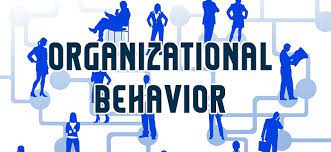Organizational behavior is a field of study that examines how individuals, groups, and organizations behave within an organizational context. It involves understanding human behavior in the workplace and how it affects organizational performance. In this blog post, we will explore the key concepts of organizational behavior and how they relate to organizational success.
Communication
Effective communication is a critical aspect of organizational behavior. It involves the exchange of information, ideas, and feedback between individuals and groups within the organization. Effective communication is essential for successful collaboration, problem-solving, decision-making, and employee engagement. Communication breakdowns can lead to misunderstandings, conflicts, and reduced productivity.
Motivation
Motivation is the driving force behind behavior in the workplace. It is the desire to achieve a goal or fulfill a need. Motivated employees are more productive, engaged, and committed to their work. There are various theories of motivation, including Maslow’s hierarchy of needs, Herzberg’s two-factor theory, and expectancy theory. Understanding what motivates employees can help organizations to create a supportive and engaging work environment.
Leadership
Leadership is the process of influencing and directing the behavior of others towards a common goal. Effective leadership is essential for creating a positive work environment, fostering employee engagement, and achieving organizational goals. Leadership styles can vary, including autocratic, democratic, and laissez-faire. Effective leaders understand their employees’ needs, strengths, and weaknesses and adjust their leadership style accordingly.
Organizational culture
Organizational culture is the shared values, beliefs, attitudes, and behaviors that shape the workplace environment. It can affect employee behavior, job satisfaction, and organizational performance. A positive organizational culture is characterized by open communication, employee empowerment, and a focus on continuous improvement. Creating a positive organizational culture requires a commitment from leaders and employees to work towards common goals and values.
Diversity and inclusion
Diversity and inclusion are increasingly important aspects of organizational behavior. It involves creating a work environment that values and respects differences in race, gender, age, sexual orientation, and other characteristics. A diverse and inclusive workplace can lead to increased creativity, innovation, and better decision-making. Organizations can create a diverse and inclusive workplace by recruiting and retaining employees from diverse backgrounds, providing diversity training, and creating policies that promote inclusivity.
In conclusion, organizational behavior is a critical aspect of organizational success. By understanding communication, motivation, leadership, organizational culture, and diversity and inclusion, organizations can create a positive work environment that fosters employee engagement and achieves organizational goals. Organizations that prioritize organizational behavior are more likely to succeed in today’s competitive business environment.




